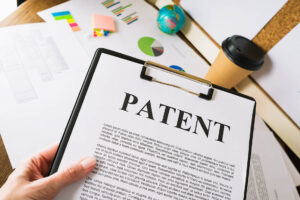Have you ever dreamt of having the Ford Anglia car (aka the Flying car) from the Harry Potter Series or the talking cars from the Disney movie?. Seems like a fantasy right, but days are not far when these vehicles will actually be a part of our life. With the fast-changing of technology, many innovative techniques have been witnessed by the automotive sector. One such successful tale of success runs with tesla, who has managed to successfully patent their car functions. The question of the protection of these technologies can be answered through IPR. In this article, we will see How To Manage IP Rights In The Automobile Industry?
Intellectual Property Rights for Automobile Sector
Managing intellectual property (IP) rights in the automobile industry is a complex and challenging task, as the industry involves a wide range of technologies, designs, and brands. In order to effectively manage IP rights in the automobile industry, it is important to understand the different types of IP that are relevant. Also as well as the strategies and tools that can be used to protect and enforce these rights.
Patent Protection for Innovative Features
One of the most important types of IP in the automobile industry is patent rights. Patents provide inventors with the exclusive right to make, use, and sell an invention for a certain period of time. In the automobile industry, patents are commonly used to protect new technologies, such as engine designs, transmission systems, and safety features. To effectively manage patent rights in the automobile industry, it is important to conduct a thorough patent search to identify any existing patents that may be relevant to your invention, and to carefully draft and file patent applications to ensure that they are as strong and broad as possible.
Trademark Registration for Brand Name & Logo
Another important type of IP in the automobile industry is trademark rights. Trademarks are used to protect brand names, logos, and other identifying features that are associated with a particular product or service. In the automobile industry, trademarks are commonly used to protect the names and logos of car brands, as well as the names of specific models. To effectively manage trademark rights in the automobile industry, it is important to conduct a thorough trademark search to identify any existing trademarks that may be similar to your proposed brand name or logo, and to carefully choose and register trademarks that are distinctive and easy to protect.
Trade Secrets & Copyrights
In addition to patents and trademarks, there are other types of IP that are relevant in the automobile industry, such as trade secrets and copyrights. Trade secrets are used to protect confidential information, such as business plans, customer lists, and manufacturing processes. Copyrights are used to protect original works of authorship, such as software, photographs, and instructional manuals.
IP Strategy in Automobile Industry
To effectively manage IP rights in the automobile industry, it is also important to have a robust IP strategy in place. A good IP strategy should include measures to protect and enforce IP rights, such as contracts with employees and suppliers, non-disclosure agreements, and other legal agreements. Additionally, it should include measures to monitor and enforce IP rights, such as conducting regular IP audits, monitoring online marketplaces for potential IP infringements, and taking legal action when necessary.
Another important aspect of managing IP rights in the automobile industry is building and maintaining relationships with industry partners. This includes creating strategic alliances and licensing agreements with other companies, as well as working closely with industry groups and government agencies to advocate for strong IP protection.
Before jumping into the IP rights analysis of what has to be used, we need to understand why IPR is important in the Automobile sector:
- Designing a new vehicle is a costly and time-consuming business. If a design or important elements of a design are appropriated by other manufacturers, your investment (and any competitive edge it brought) will be lost.
- Counterfeiting of auto components, indeed, is intellectual property theft as it can infringe any, or all, of the main intellectual property rights, namely trademarks, patents, designs, and copyrights. It leads to a loss of revenue to the OE manufacturer.
- The framework provides a holistic solution to safeguarding the financial as well as the intellectual aspect of a product. But administrative loopholes such as red tape, complex patent filing, and costly litigations could end up tarnishing a brand’s image as well as a result in the loss of revenue.
- Intellectual Property Rights (IPR) can today be the tool of all manufacturers to ensure that innovation is in place, and a strong legal framework can check the loss of propriety technology in favor of sub-standard copies.
- With many vehicles now coming to market featuring some level of automation and fully autonomous cars being tested on public roads, we need a new way to manage IP rights and solve the fundamental challenges facing autonomous vehicles and the modern automotive industry as a whole.
- As the automotive industry develops and more innovations are introduced, there will be a greater and natural need to acquire and enforce patents by manufacturers.
Need for managing IP Rights in Automotive Sector:
Intellectual property is among the most important and valuable business assets that a company owns. As innovation and technology are evolving at an accelerated pace, competition among automotive manufacturers and suppliers is as fierce as ever, intellectual property (and the protection and enforcement of it) will be more important than ever. The automotive industry had the third-highest amount of patents and patent applications filed during 2009 – 2014. During this period, the automotive industry experienced the third-highest percentage increase in patent filings across the top 12 technology sectors, following only computing and telecoms.
The automotive industry is separated into various categories, including safety and security, with all major vehicle manufacturers having joined the “revolution in safety.” Automobiles are more than just transportation; they are the most advanced technology owned by consumers.
Historically, motor vehicle manufacturers and suppliers focused on vehicle safety more in terms of engineering technology features such as airbags and seatbelts. Today, vehicle safety has evolved to high-tech cameras, sensors, driver assistance devices, and other technology that mitigate automobile accidents. Modern-day technology allows for vehicles to gauge their surroundings, alert drivers of potential threats, and are equipped with features like auto-braking, crash avoidance, and lane departure warnings. Just think of the modern-day motor vehicle as a computer on wheels, and intellectual property will continue to play a major role in fostering the innovation evolution.
Managing the IP Rights of the Automobile Industry:
Every IP rights are different and have its own functionality. The industry tycoons are racing each day to mark their presence in the industry. With covid-19 relaxation favoring the automobile industry and the budget 2021 keeping the automotive sector on the top priority list, there is an urgent need to understand how can you manage your IP rights amidst the heavy competition? Of all the IP rights, we shall focus on the three major rights of the Automotive industry- Patents, trademarks, and design. We shall also discuss in brief about role of copyrights and trade secrets as well.
Patents and Automobile sector
The automobile sector has witnessed a tsunami of patent filings both in Indian and Foreign Jurisdiction. The top IP tycoons of the automotive sector are Tata Motors, M and M Limited, TVS Motors, BMW, Ford, etc. Integration of computer applications to the automobile sector has increased the impact of IP on this sector. This has been the major reason for the upward trend in Patent Filing.
Analyzing the lawsuits filed- Earlier, the disputes were among the players of the sector or their suppliers. Interestingly, after merging computers into automobiles, the nature of lawsuit filing has witnessed a paradigm shift. Increasing cases of licensing have been aboon for the automobile sector, which will keep growing and will make the sector turn into the market sector.
Automobile sector
A new trend has been waving in the market to patent those technologies which are mere improvement of the existing ones. The automotive sector focuses more on the utility model, which is why we have seen more foreign applications than Indian applications. In India, the patent of a product requires three main essentials – novelty, originality, and industrial application. However, a close reading of section 3 indicates that mere changes in existing products cannot be a patentable subject matter. Hence, Indian companies have to resort to these foreign applications.
The focus of automobiles from a safety perspective to safety plus luxury perception has brought a considerable change in the system. Improvements, innovations, designs, and various technological improvements have to be seen in the last 10 years. It is highly required for the IP Tycoons to understand the need to rethink and re-arrange their Patent policies to have a stand in the market.
The modern automobile is the outcome of 100,000 patents and the dedication of millions of inventors. Indian Automotive Industries have filed many patent applications and using the same technologies in their product line to overwhelm the market competition.
Trademark and Automobile sector:
It is pertinent to quote a famous line by David Ogilvy before we start this discussion. He says “Within every brand is a product, but not every product is a brand.” The importance of branding in this sector is always considered of utmost importance. The world is all about branding and promotions. If your brand is well-known in the market, it adds to your asset and helps you increase the sales of your products. I would personally prefer busing those vehicles if they are known to all, and by that, I clearly mean that I would invest in branded products if it requires a huge investment. (PS: Not a brand freak but just a conscious investor). Brand value is determined if a consumer is willing to pay more for one brand over the other, and it is not always the product that makes up the brand value.
Statistically speaking, as of 2019 the Indian automobile market holds the position of being the fourth largest in the world, with the scale of production increasing 9.5 percent every year. This calls for confusion as to what to choose and what to reject. At this point, the brand value and image give an upper hand in choosing the product.
Many leading companies invest more time designing their logo, name, design, and branding manual of their products. One such classic example was the change of name from Toyoda to Toyota to make the name and brand catcher and more visible. Lots of thoughts have been put up in designing the logo, and that does not stop there. These companies have also designed fluid marks based on the current situation.
Here are a few logos that have ruled the automotive market
Designs and Automobile sector:
The aesthetic look of an automobile is the ultimate commercial feature of any automobile company. Mercedes, GM, Honda, Toyota, Tata, Bajaj, and many more have already established their own brands with unique design impressions on a customer. They are changing their product lines both in functional and aesthetic terms in accordance with the changing consumer tastes.
There have been few automotive designs that have made their entry into the market in the cinematography sector:
- Herbie – The VW Beetle.
- Back to the Future – The Delorean
- James Bond 007 – The Aston Martin.
- The dukes of Hazzard – 1969 Dodge Charger.
- Beverly Hills Cop – The Red Ferrari.
- Knight Rider – The Pontiac Firebird Trans Am
- Gone in 60 Seconds – The 1967 Shelby GT 500 Mustang.
- The Herbie Series – 1963 Volkswagen Beatles
- Mr. Bean – The good old mini
- The Fast and furious – Mitsubishi Eclipse, Mazda Rx8, Toyota
- Thunderbirds – The Pink Rolls Royce
- Transporter- Audi 8
Better late than never- Manage your rights now.
Indian Auto Industry is now pacing up with the impact of Intellectual Property [IP] in their business field. But, they are still way behind in comparison to the US and European Auto Industry. Growing with IP should be a new mantra for Indian Auto Industry.
The IP should be incorporated in an industry with a long-term vision. Identifying, recording, and registering of own IP should be on the company plan.
Indian Auto industry has to realize that an intellectual property right is the essence of the present knowledge economy and would be able to hold the industry against a strong competitive market force. That would ultimately lead to a new future for Indian business and would participate in making the economy stronger by enriching it with new technologies.
In conclusion, managing IP rights in the automobile industry is a complex and challenging task, but it is also essential for the growth and success of the industry. By understanding the different types of IP that are relevant, having a robust IP strategy in place, and building and maintaining relationships with industry partners, companies in the automobile industry can effectively protect and enforce their IP rights and gain a competitive advantage in the marketplace.







